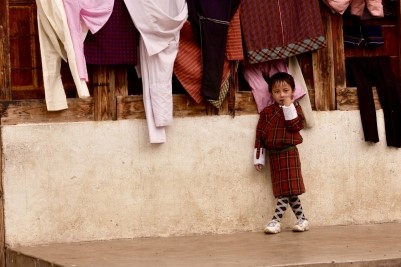 Guided by the philosophy of Gross National Happiness, the Royal Government of Bhutan takes multiple aspects into account to improve the well-being and living standards of its people. In this regard, high interest is given to civil registration as it is recognized as the first step in ensuring the provision of citizens' rights. As part of such efforts, a transition was started at the beginning of the twenty-first century to enhance the civil registration process from a paper-based system to a database called the Bhutan Civil Registration System. Administered by the Department of Civil Registration and Census under the Ministry of Home and Cultural Affairs, the system generates a citizenship identity number in parallel to the registration of a child’s birth. To make the registration process more accessible, the Royal Government established registration facilities through community centres at the Gewog level (block level). As soon as the birth registration is completed, the system sends a text message to the applicant with the citizenship identity number. This web-based civil registration system not only increases the coverage and completeness rate of registration, but it also offers benefits for data integration. In particular, it allowed for the development of the national population register, with updates in real time, which makes Bhutan the only country in the South Asia to achieve the full integration of the civil registration and identification systems.
Guided by the philosophy of Gross National Happiness, the Royal Government of Bhutan takes multiple aspects into account to improve the well-being and living standards of its people. In this regard, high interest is given to civil registration as it is recognized as the first step in ensuring the provision of citizens' rights. As part of such efforts, a transition was started at the beginning of the twenty-first century to enhance the civil registration process from a paper-based system to a database called the Bhutan Civil Registration System. Administered by the Department of Civil Registration and Census under the Ministry of Home and Cultural Affairs, the system generates a citizenship identity number in parallel to the registration of a child’s birth. To make the registration process more accessible, the Royal Government established registration facilities through community centres at the Gewog level (block level). As soon as the birth registration is completed, the system sends a text message to the applicant with the citizenship identity number. This web-based civil registration system not only increases the coverage and completeness rate of registration, but it also offers benefits for data integration. In particular, it allowed for the development of the national population register, with updates in real time, which makes Bhutan the only country in the South Asia to achieve the full integration of the civil registration and identification systems.
In Mongolia, the will to increase accessibility of state services, including through digitization, has led to similar achievements. In 2018, it adopted the “One citizen, One registration” programme* with three overarching goals: to further integrate the system of civil registration to provide prompt delivery of public services, to fully digitize the original sources and to ensure data security.
Indeed, while Mongolia was already registering most of its vital events, the lack of collaboration between the primary stakeholders led to discrepancies and data quality problems. Through the revision of the civil registration law as well as the signing of a memorandum of understanding, these institutions were able to connect their different databases by key features, such as identification number, to form a national comprehensive database. This means that the registration of a child’s birth in a civil registration office enables the child to later obtain an identification number and an identification card, while the relevant information is securely transmitted to the Ministry of Health and the National Statistical Office. Most local registration offices are now connected to the Internet, allowing for automatic transmission to the database, and the programme is still ongoing to connect the remaining offices.**
Notes: *National Statistics Office of Mongolia (2019) Integration of CRVS and ID systems, Available at https://getinthepicture.org/system/files/Integrating%20CRVS%26ID%20-%20Mongolia.pdf.
